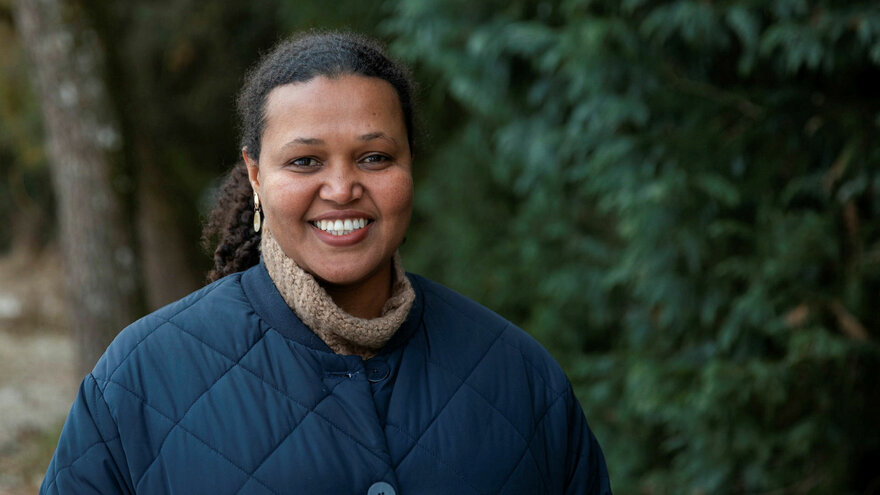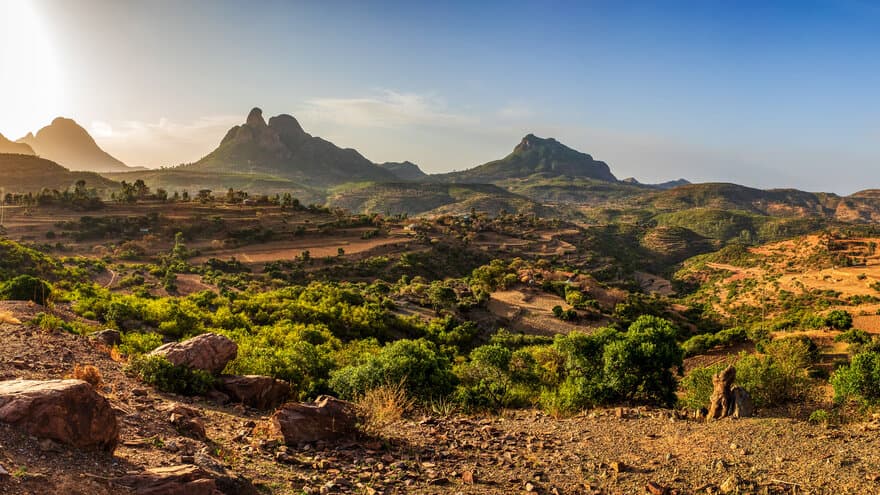In a new project, researchers will use hyperspectral imaging and deep learning to detect and characterise climate proxy properties of tree-rings in selected tropical tree species.
The Norwegian University of Life Sciences (NMBU) is excited to announce that researcher Meley Mekonen Rannestad has received funding from The International Human Frontier Science Program Organization for a novel research project in the field of dendroclimatology.
The project aims to revolutionize the way we extract past climate records from trees in the tropical regions.
Important method in climate research
Dendroclimatology is the science of extracting past climate records from annual growth rings of trees. Putting it simply, it is studying tree rings and using this information to extrapolate information about the past.
“Dendroclimatology plays a critical role in climate research,” researcher Meley Mekonen Rannestad explains.
“Trees are living, breathing archivers of the past,” she says.

Tree growth is dictated by the growing season, temperature, rainfall and the like, which in turn results in the familiar tree rings. By analysing the rings, scientists learn about past climates.
Dendroclimatology has been extensively applied in the temperate and boreal regions, where environmental factors induce annual ring formation that show clear, quite predictable seasonal patterns. In the tropical latitudes, however, such investigations have been limited as tree ring formation can be more complex.
Our knowledge about Africa’s climate past is poor
“Tree rings in the tropics can be quite different from those in cooler climates,” Rannestad comments.
“They are often complex and difficult to decipher.”
In middle latitudes, seasons are not as clearly demarcated than in the polar and boreal regions. During any given year there can be wide climate fluctuation if there are strong influences from El Niño, droughts, large hurricanes, or similar factors.

Thus, past climate records in tropical countries, particularly in Africa, are scarce and the continent’s climate science is, to date, the least advanced in the world. Yet, tree-rings offer widely available climate-proxy data sources in Africa, indicating a need for improved tree-ring detecting and characterizing technologies.
Filling a major scientific gap
In the new project, the researchers aim to alter how tree rings are analysed in the tropics. They will develop and test a new approach that combines hyperspectral imaging (HSI) and deep learning (DL) for detecting and characterising tree-rings in selected tropical tree species.
The project is a collaboration between a fully equipped HSI lab at NMBU in Norway and an emerging tropical dendroclimatology lab in Ethiopia.
“The new method we're proposing could be a game-changer in the field of tropical dendroclimatology,” Rannestad says.
Another advantage method is that the method is simple, doesn't harm the samples, and is efficient.
"This project has the potential to overcome current methodological limitations, and fill the big geographical gap in climate information, particularly in Africa where the continent’s climate science is currently the least advanced."
Future climate resilience
"NMBU is dedicated to fostering innovative research that expands the boundaries of scientific understanding and contributes to sustainable development,” NMBU’s pro-rector for research Finn-Arne Weltzien, says.
“This project is a testament to that commitment."
"Our hope is that it holds the potential not only to revolutionise our understanding of climate history in tropical regions, but also to provide critical insights for future climate resilience," he concludes.
About HFSP:
The Human Frontier Science Program (HFSP) supports international collaboration to undertake innovative, risky, basic research at the frontiers of the life sciences. Special emphasis is given to the support and training of independent young investigators, beginning at the postdoctoral level.
The Program is implemented by the International Human Frontier Science Program Organization (HFSPO), supported financially by Australia, Canada, the European Commission, France, Germany, India, Israel, Italy, Japan, New Zealand, Norway, the Republic of Korea, Singapore, South Africa, Switzerland, the United Kingdom of Great Britian and Northern Ireland, and the United States of America.
Since, 1990, more than 8,500 researchers from more than 70 countries have been supported. Of these, 29 HFSO awardees have gone on to receive the Nobel Prize.
About the project:
Project title: A novel approach to tropical dendroclimatology using hyperspectral imaging and deep learning (ATHIL)
Duration: 3 years
Budget: 900 000 USD
Funding: The Human Frontier Science Program (HFSP)
Project coordinator: NMBU
Project partners: Mekelle University, Ethiopia
